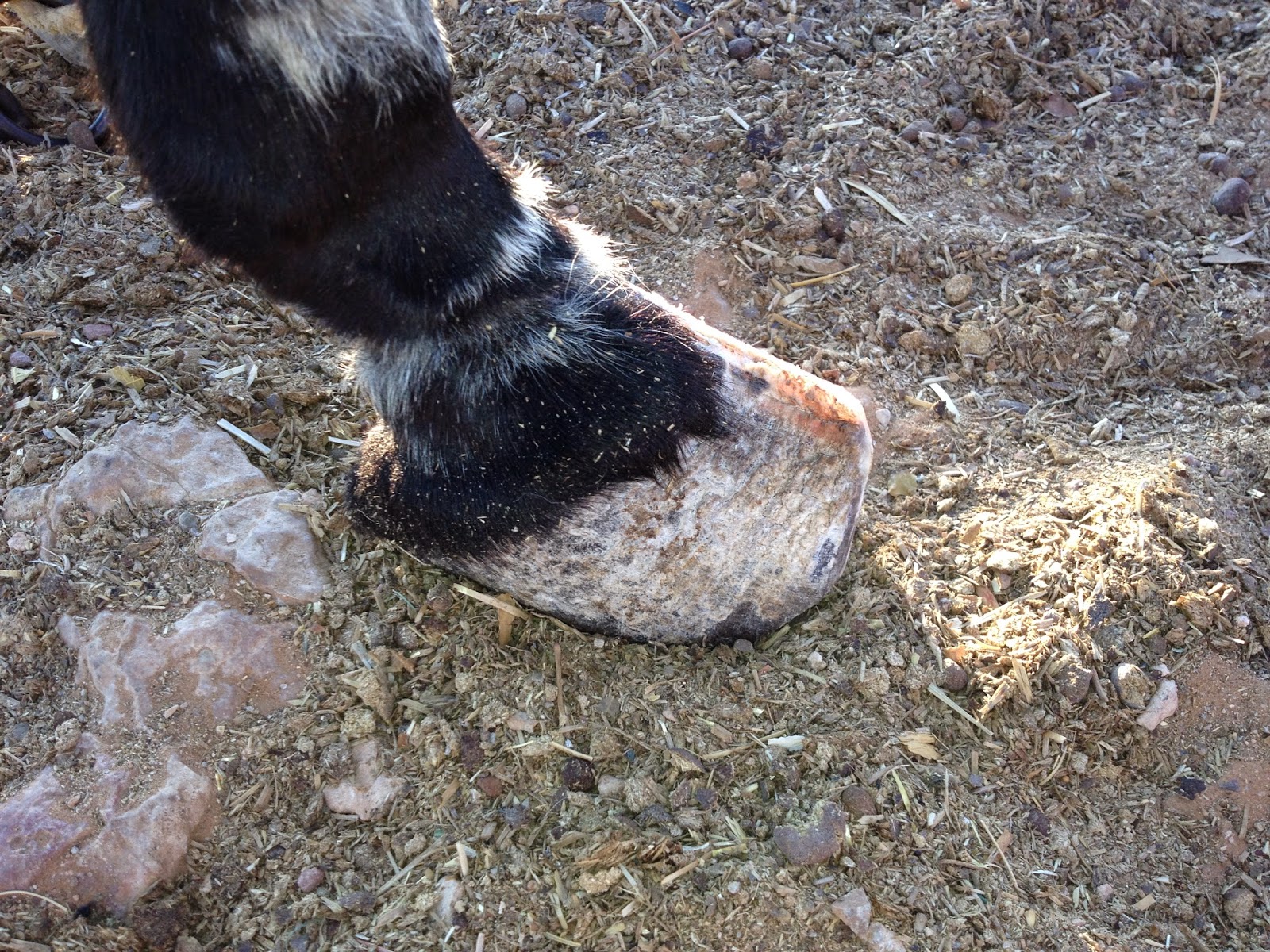Wednesday, September 3 was filled with making the rounds in the community of Ksar Oun with our host veterinarian, Dr. Ahlem Lahmar, and our guest veterinarian, Dr. Emna Brour. It was a tremendous benefit to have access to Ahlem's
clients so we could assess and treat the donkeys. Without her
connections, this productive day may not have been possible. (click on photo to see full size images)




The day
brought promise of finally getting to do some work and have an impact. Our
initial stops were short because we had many visits to make and didn’t want to
run out of time. The first few donkeys we saw were young to middle aged and had
moderately long hooves and their teeth had minor points but no oral lesions. We
administered the donated Medivet internal and external anti-parasitics and quickly did hoof and dental
filing.
 |
| Emna with our first patient |
 |
| Tricia administers oral dewormer |
 |
| Emna applies the external anti-parasitic solution |
 |
| Girl Power ! (thank you Jaber for being our photographer) |
 |
| Ahlem uses her new dental skills |
We continued
on to the next client who had a black donkey that was sick. The owners reported
the three year old animal had been off for several weeks. They observed
stiffness and weakness along with a lack of appetite. We recognized the
symptoms as neuromuscular with a very tight jaw and hindquarters, elevated
heart rate and no fever, good gum color. We discussed possible diagnoses
including tetanus, tying up, and selenium deficiency. We recommended they keep
the donkey in the shade, offer softer feed and Ahlem would return with selenium supplement.
This same
family had a grey donkey that they use to pull a cart; they didn’t know how old
she was. Tricia looked in her mouth and immediately saw she was an older donkey
and the owners were surprised to hear she was a grandmother (probably over 20
years old). The matriarch of the family was curious to see the teeth. The upper
arcade was worn down and the lower arcade had very prominent rostral hooks,
which were very easy to see. It was rewarding to have an enthusiastic audience appreciate our work.



We suggested
Ahlem come visit this older donkey every six months to keep the rostral hook
under control. After the donkey care, Tricia was treated to a wool carding
lesson and the sweetest smile by the very endearing owner.
Our last
morning visit was at one of the largest farms in the community. This owner had
a female donkey with a deformed overgrown hoof. He said he trims it (with a
tool similar to our hoof knife) twice a year but it was still very long and had
a collapsed wall. We tried to trim it with the nippers but it was too tough.
Jaber used our new toeing knife as Tricia stabilized the foot on a make shift log
hoof stand. It worked great! We carved a walking surface with the nippers and
hoof knife and recommended the owner trim the hoof more often.

Ahlem’s family
had a lunchtime feast waiting for us – cooscoos with tender goat meat, peppers
and potatoes. It was Tricia’s first time eating goat and found it quite tasty.
After lunch we had sweet melon and Tunisian tea, and then all settled down for
naps to avoid the afternoon heat.
Once the sun
starts to set, the temperature becomes bearable again to resume working. We finished
the evening working on a few donkeys in Ahlem’s neighborhood (some of which we
hadn’t planned to work on, but word got out we were in town). We used the
toeing knife again on her aunt’s donkey with a deformed hoof from an old
coronary band injury. The aunt was afraid to watch the procedure but pleased
with the results. It is really satisfying to create a normal looking and
functional hoof with artistic trimming.
On the drive
back to the hotel, we (Jaber and Tricia) discussed what we had seen and done on
our first workday. On a good note, we agreed it was a productive effort and really
pleased the donkey owners seemed genuinely grateful to have us provide
services. They were happy to talk to us and didn’t question what we were doing.
We took our time in approaching the donkeys and handled them with gentle hands.
The donkeys were all very agreeable to have their hooves and teeth treated, and
swallow the oral dewormer. Ahlem and Emna received training and were able to
practice their new dental and hoofcare skills. We made contact with the local blacksmith who
said he could make tools for Ahlem.
 |
| Our tool kit |
However,
Tricia expressed her overall impression that there was something missing from
the donkeys’ eyes and they were almost too well behaved. They lacked the usual
equine curiosity and personality. Was this lack of vitality a breed difference
or was it because the animals were weak and ill? The donkeys were all
underweight; and many appeared malnourished. The system of tethering and
hobbling combined with infrequent use seems to be negatively affecting their
musculoskeletal system and hooves. The lack of social interaction with other
donkeys and people may be affecting their demeanor.
Jaber wondered
why Tricia hadn’t said how bad the donkeys looked; she answered she felt like
she was there to observe, do a little work and not interfere with his
colleague’s veterinary practice. Tricia didn’t want to offend the donkey
owners. Jaber explained she was there as the expert from the United States and
it would be appropriate to express her opinion; in fact, she should have spoken
up with the first patient.
Ah okay, lessons
learned for a stranger in a strange land who doesn’t speak the language and is
unfamiliar with social customs. Tomorrow will be different.
















No comments:
Post a Comment